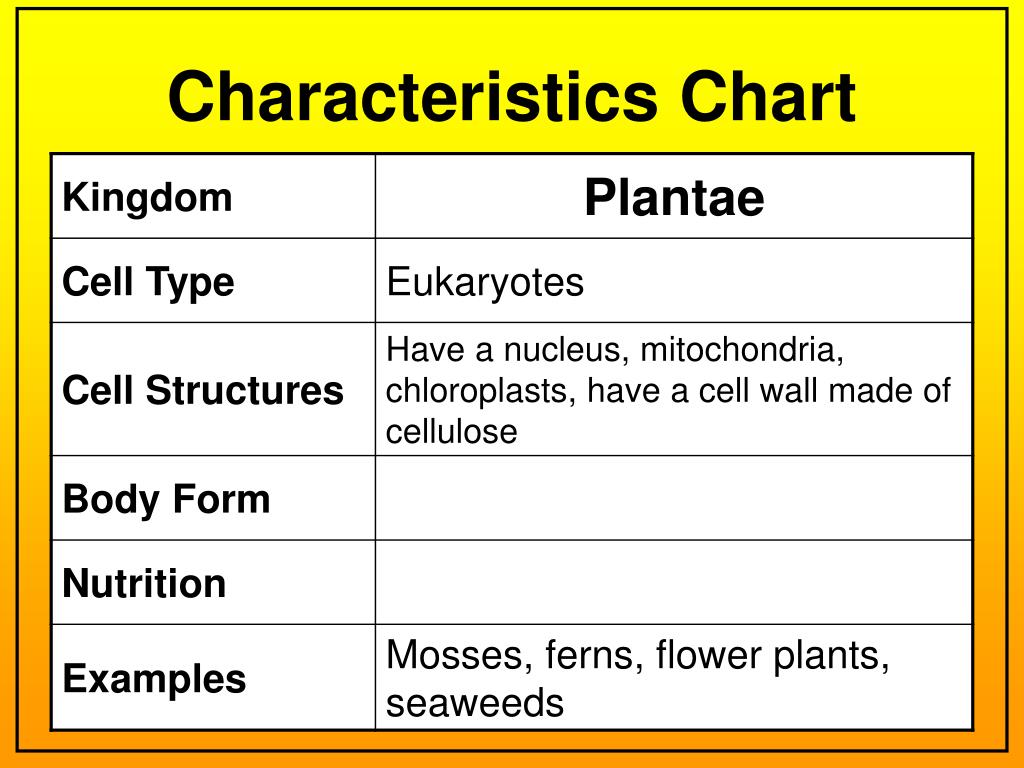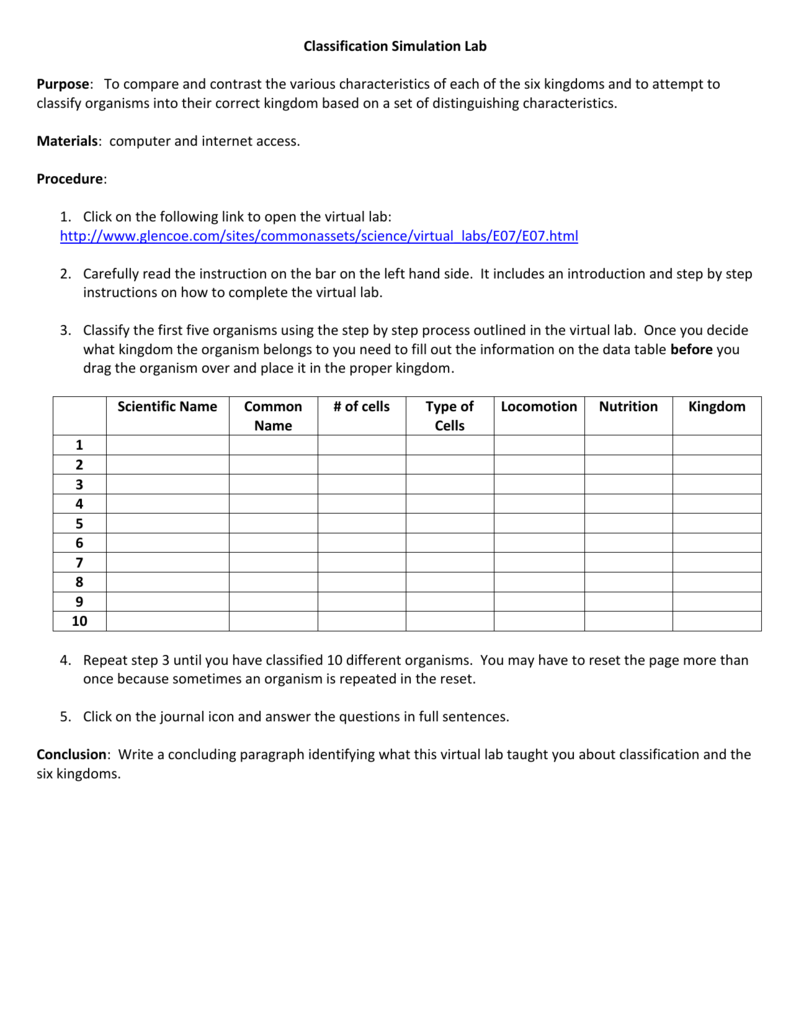Six Kingdom Characteristics Chart
Six Kingdom Characteristics Chart. The organisms in each Kingdom are considered biologically distinct from the others. SIX KINGDOMS CHARACTERISTICS CHART Eubacteria / Archaebacteria / Protista / Fungus / Plant / Animal Cell Type / prokaryotic / prokaryotic / eukaryotic / eukaryotic / eukaryotic / eukaryotic Number of Cells / unicellular / unicellular / most unicellular / most multicellular / multicellular / multicellular The six kingdoms are grouped according to five major categories in addition to other major characteristics.

The six kingdoms are Eubacteria, Archae, Protista, Fungi, Plantae, and Animalia.
Motility Other Examples This chart sets the content to be covered in the Six Kingdoms Unit.
The chart below shows how the kingdoms have changed over time. Although there is a lot of variety within the protists, they do share some common characteristics. There are specific characteristics that scientists use to categorize all organisms into six kingdoms.
Rating: 100% based on 788 ratings. 5 user reviews.
Donald Gearhart
Thank you for reading this blog. If you have any query or suggestion please free leave a comment below.







/six-kingdoms-of-life-373414-Final1-5c538e2446e0fb00013faa3c.png)


0 Response to "Six Kingdom Characteristics Chart"
Post a Comment